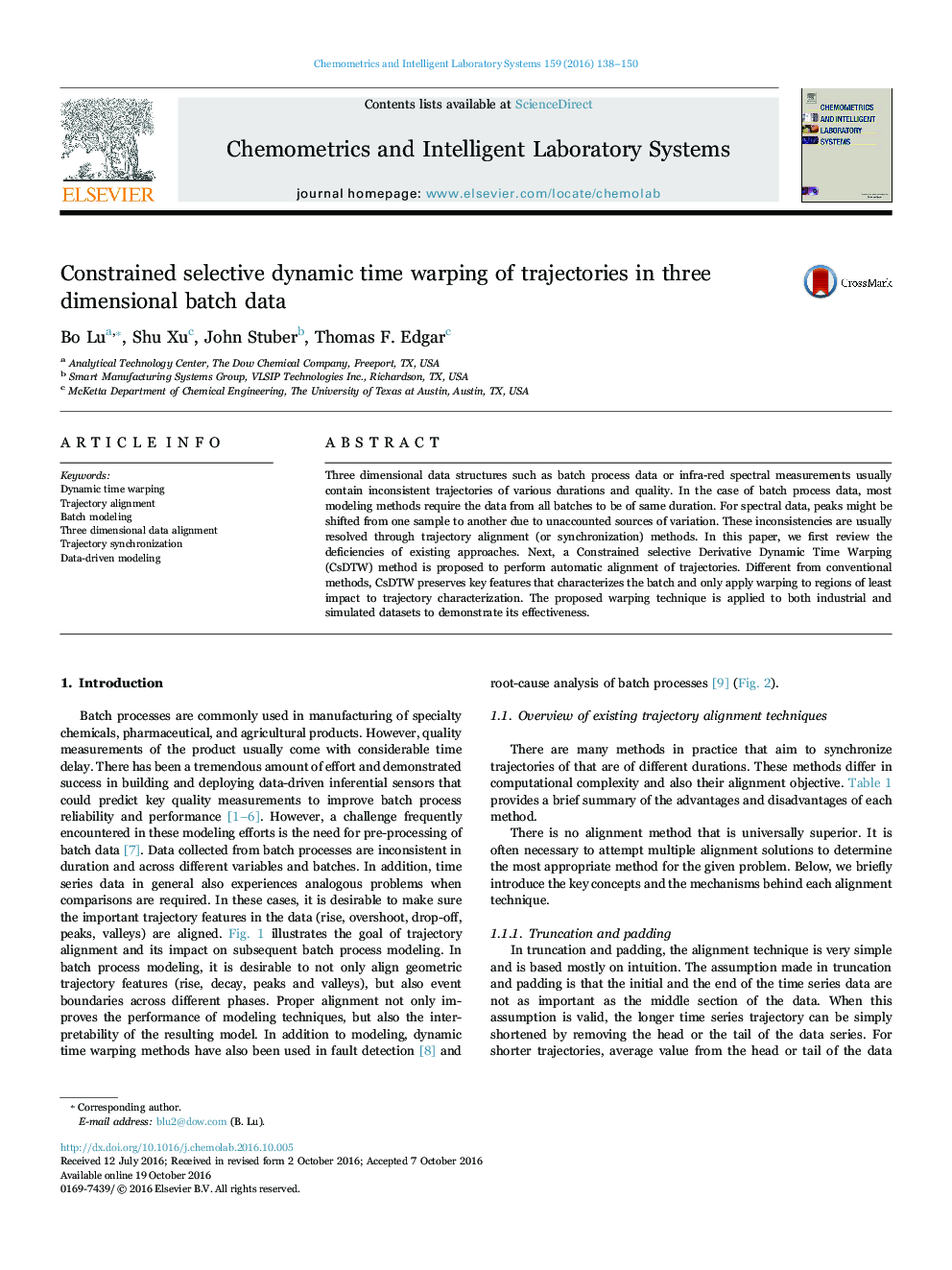| کد مقاله | کد نشریه | سال انتشار | مقاله انگلیسی | نسخه تمام متن |
|---|---|---|---|---|
| 5132359 | 1491520 | 2016 | 13 صفحه PDF | دانلود رایگان |
- The paper addresses the on-going challenge with modeling batch processes with inconsistent trajectory lengths or analytical chemometric models with misaligned spectral data.
- Although the state of art such as Covariance Optimized Warping and Dynamic Time Warping have been shown to work well in a variety of circumstances, they each face challenges in their wider adoption. The proposed method warps trajectories selectively to regions of interest.
- Regions of interest can be specified using a reference trajectory or statistically calculated using the variable of importance in projection from a PLS model or the variance ratio.
- Extensions of traditional Dynamic time warping such as the robust version or the derivative version could also be easily extended to the proposed approach.
- Proof of concept through case studies using simulated and industrial data are both provided. The industrial data came from a voltage probe in a plasma etching tool and a batch stripping process in the chemical industry.
Three dimensional data structures such as batch process data or infra-red spectral measurements usually contain inconsistent trajectories of various durations and quality. In the case of batch process data, most modeling methods require the data from all batches to be of same duration. For spectral data, peaks might be shifted from one sample to another due to unaccounted sources of variation. These inconsistencies are usually resolved through trajectory alignment (or synchronization) methods. In this paper, we first review the deficiencies of existing approaches. Next, a Constrained selective Derivative Dynamic Time Warping (CsDTW) method is proposed to perform automatic alignment of trajectories. Different from conventional methods, CsDTW preserves key features that characterizes the batch and only apply warping to regions of least impact to trajectory characterization. The proposed warping technique is applied to both industrial and simulated datasets to demonstrate its effectiveness.
Journal: Chemometrics and Intelligent Laboratory Systems - Volume 159, 15 December 2016, Pages 138-150
